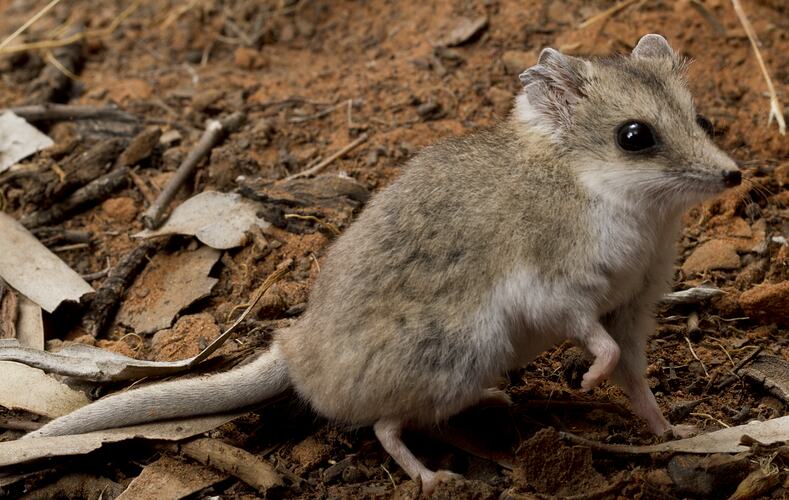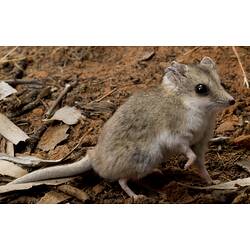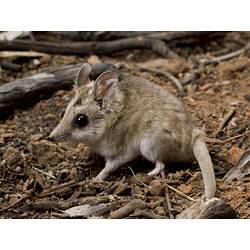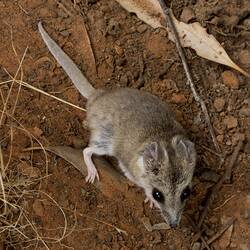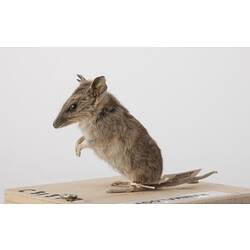General Description
Body fur yellow-brown (buff), darker around eyes and white underneath. Large ears and a pointed nose. Tail very wide at the base. Hind feet long and white. Body up to 9 cm, tail up to 6 cm.
Biology
Fat-tailed Dunnarts feed on insects and shelter in a communal grass nest under a log or rock. They store fat in their short tail to use when food is scarce. The use of pesticides could affect their survival in agricultural areas.
Distribution
South and central mainland Australia, excluding eastern and southwestern coastal areas.
Habitat
Variety of open habitats such as grasslands and desert.
More Information
-
Animal Type
-
Animal SubType
-
Brief Id
Yellow-brown fur, white underneath, fat tail, large ears.
-
Colours
Brown, Grey
-
Habitats
-
Where To Look
-
When Active
Nocturnal
-
Diet
Carnivore
-
Diet Categories
Insects, Invertebrates
-
Endemicity
-
Conservation Statuses
CITES: Not listed, FFG Threatened List: Threatened, EPBC Act 1999: Not listed, IUCN Red List: Least Concern
-
Taxon Name
-
Common Name
Fat-tailed Dunnart
-
Kingdom
-
Phylum
-
Subphylum
-
Class
-
Superorder
-
Order
-
Family
-
Subfamily
-
Genus
-
Species Name
crassicaudata
